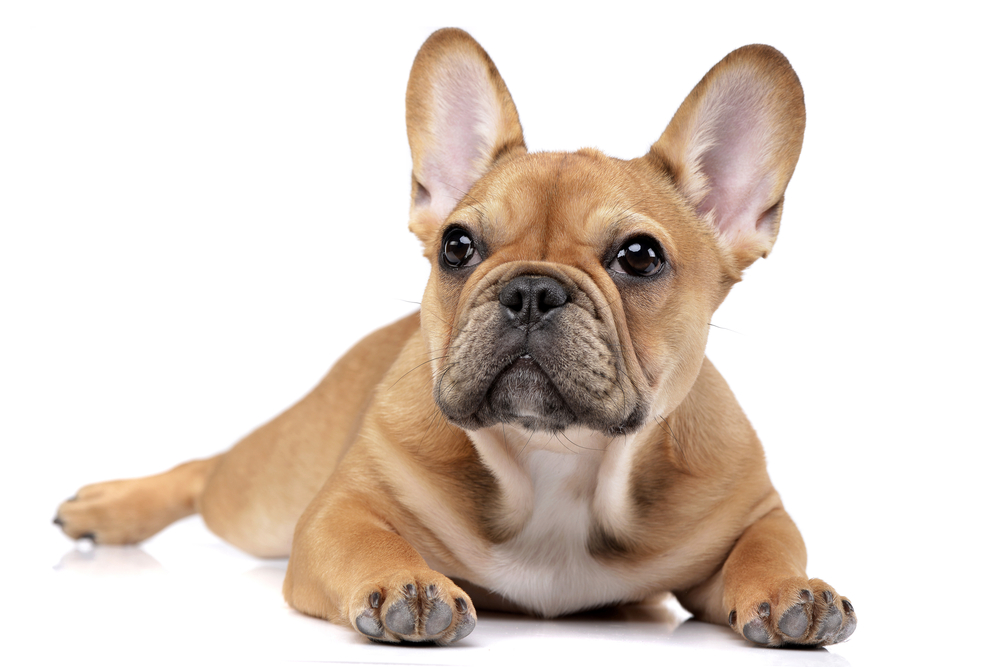Do you love an adorable French Bulldog? Do you think that a fuzzy little Shih Tzu or a bouncy Pug is just the cutest dog ever?!?! If so, you are not alone. The popularity of these dogs, and others like them, has skyrocketed. The “cuteness” of these breeds occurs in part because they have a difference in the anatomy of their skulls, namely the flat or “smushed” face, which sets them apart in appearance from other breeds of dogs.
That can affect their health, especially if they need anesthesia for a procedure. Here’s why.
Short Face, Short of Breath?
The term “brachycephalic” means “short-headed.” This anatomical difference gives them that big-eyed baby face, but it also affects their health–and not in a good way. The compression of all of the structures in a dog’s head–the nostrils, the nasal passages, and the upper part of the windpipe (or trachea)–into a condensed, flat space, means that things might not fit together properly. This affects the ability of brachycephalic dogs to breathe normally. The structures around the eye can also be affected, making their eyes protrude further than normal (“bug-eyed”), putting the eyes at greater risk for damage. Brachycephalic cats, such as Persians, Himalayans, and Exotics, can have the same problems.
Some brachycephalic pets have difficulty breathing all of the time and some only when a situation makes their breathing rate increase, like “panting” during hot weather. Excitement, stress, anxiety, fear, and pain also cause rapid breathing.
All of these situations can be catastrophic in brachycephalic breeds, even leading to complete windpipe collapse if breathing becomes extremely rapid. This physiological response is why many airlines do not permit brachycephalic breeds to be transported in the cargo area of the plane. This is also why veterinarians take extra precautions to keep your pet calm and pain-free during exams and treatment and may use anesthesia to support your pet’s breathing.
Anesthesia is obviously necessary for major procedures such as surgery, but even for something minor, your veterinarian may choose to anesthetize your pet and place a breathing tube in the windpipe. This is done to ensure that your brachycephalic pet can breathe normally during what might be a stressful procedure.
However, this technique can also be a bit scary. Both sedation, or “tranquilization,” and anesthesia can cause some breathing impairment that is generally only a minor concern in most patients. But this depression can be dangerous when combined with the impaired breathing caused by the anatomy changes in brachycephalic breeds.
Safety Techniques
The good news is that veterinarians and veterinary nurses are well aware of the potential complications in brachycephalic breeds and they will take extra care with your pet. The veterinarian or veterinary nurse will deliver just enough medication intravenously to anesthetize your pet and will immediately put the breathing tube in your pet’s windpipe.
That tube will remain in your pet’s windpipe until he or she is completely awake and breathing normally. In addition, the anesthesia team will monitor all of your pet’s vital signs: breathing, heart rate, and blood pressure. The team will also put lubricant in the eyes to help prevent damage.
Preventing Problems
Your veterinarian can advise you on appropriate medical care of your brachycephalic pet. Some airway changes can be corrected surgically. This is especially important if your brachycephalic pet has difficulty breathing all of the time or has moderate to severe difficulty even part of the time. Get advice when your pet is a puppy or kitten because some airway changes worsen over time and should be addressed early.
Discuss anesthesia and choose veterinarians who use injectable medications to anesthetize your pet. “Gassing” brachycephalic breeds to induce anesthesia is dangerous and should not be done. The gas, or inhalant, should be used only after the pet is asleep and the tube is placed in the windpipe.
Talk to your veterinarian about Fear Free handling techniques. Fear Free handling will decrease the likelihood of excitement, fear, and pain, which will allow your pet to breathe more normally. If your pet experiences bouts of fear, anxiety, or stress at home (during thunderstorms, for instance) or during the car ride to the veterinary clinic, a veterinary behaviorist, certified applied animal behaviorist, or trainer who is Fear Free certified can advise you on managing these problems.
Not all brachycephalic pets need medical treatment or behavioral training to support their breathing, but those who do can live a more active, less stressful life with some good advice from your veterinarian and with the implementation of Fear Free techniques.
This article was reviewed/edited by board-certified veterinary behaviorist Dr. Kenneth Martin and/or veterinary technician specialist in behavior Debbie Martin, LVT.








